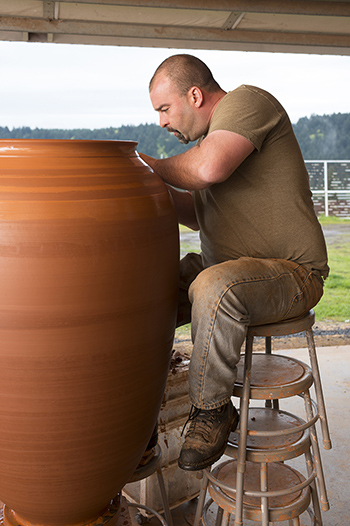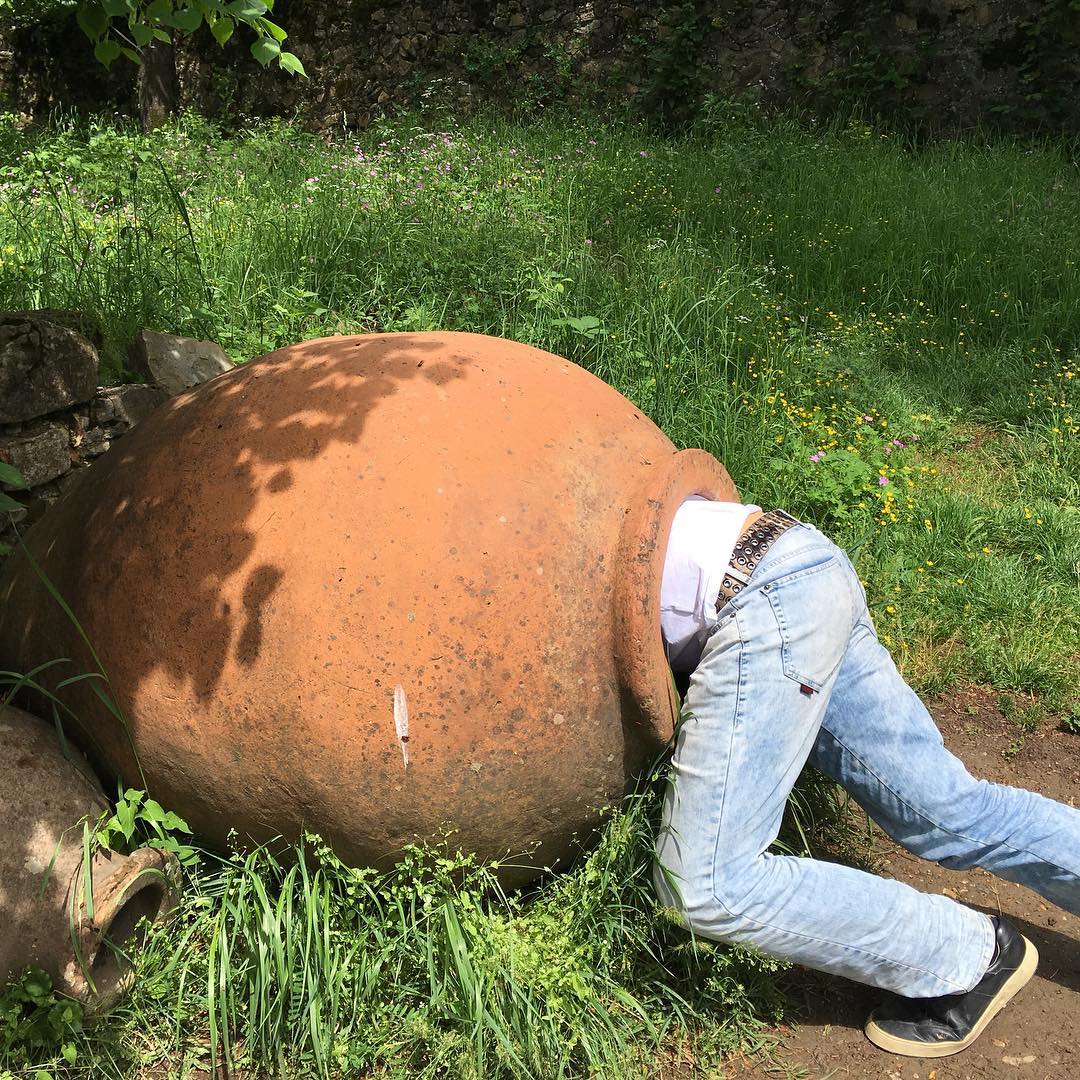Reign of terracotta
In 2015, we organised a tasting called Feats of Clay and invited several growers to come over to London and pour wines that had been made in various types of clay vessel.
Although some growers and their wines have fallen by the wayside for one reason or another, the number of our producers who work with this medium has increased over the years, and so, by definition, the number of clay-made wines that we list in our portfolio.

Clay vessels are increasingly being used either for fermentation or maturation, with many vignerons experimenting with pots of different shapes and sizes, different macerations, and different ageing regimes. It is almost unheard of when visiting a natural winery not to see a clay pot or several lurking in the corner of the room.
Fifteen years ago, it was very unusual to find clay-made wines
Clay, of course, is an historic medium in which to make wine. In Georgia, the vessels were buried in the ground, out in plain air originally. In Roman times, the amphorae were slimmer and had handles so that they could be easily transported. Clay itself is an excellent insulator, allows the wine to breathe, and has antiseptic qualities. A lot has been written about the shape of various clay vessels and how it impacts on the fermentation, and also contributes to the very textural nature of the wine.
Fifteen years ago, it was very unusual to find clay-made wines. In Friuli, the example of Josko Gravner (himself influenced by Georgian wines and winemaking techniques) led to producers such as Paolo Vodopivec (another lover of Georgia’s wine tradition) to use qvevri, a large bulbous terracotta vessel traditionally buried underground). In Slovenian Styria, Bozidar Zorjan claims to have begun working with qvevri even earlier than Gravner. Elsewhere, Italy has long espoused the dolium, a large oval earthenware container that was often buried, and Greece has its own particular vessel, and long tradition of making wine in clay.
Whereas once clay vessels may have been more commonplace, with many local craftsmen making pots on behalf of their particular village or region, now it is somewhat of a vanishing trade. However, clay pots are in high demand again. Some manufacturers have long waiting-lists. Old vessels are being repurposed and exported from one region to another, one country to another.
Looking back to look forward
We (Les Caves) now have wines made in clay from France – Bordeaux, Loire, Jura, Languedoc, Rhone & Champagne); Italy – Lazio and Sicily; Greece; Lebanon; Oregon; Australia; Chile; Portugal; Spain; Slovenia; Georgia and the UK!

Clay winemaking largely goes hand-in-hand with using indigenous grapes and ancient methods. (such as skin maceration for white wines), although any grape variety can be fermented and/or aged in clay. Vinification techniques will also, of course, depend on the variety, the vintage, the local wine culture, and the whim of the vigneron. Winemaking may be extractive (for example, traditional eastern Georgian style with its lengthy macerations and frequent punch downs), or more akin to gentle infusions with skins being left in contact with the juice and gently stirred. The influence of the vessel may be more marked in some wines than others, but clay is viewed as a relatively neutral medium, not imbuing the wine with the flavour of the ageing vessel. Talk to some producers though, and they will say that wines made in clay tend to exhibit a slightly bricky/earthy texture and sensitive tasters may indeed discern this character.
Suffice to say that clay pots are another tool in the winemaking box. Some vignerons use them as a matter of course; others like to have a pot or two in the cellar to play with and in which do micro-vinifications. Using clay is aesthetically appealing and the substance itself contributes to a different winemaking narrative. The disadvantages are the fragility of the vessels and the need for scrupulous hygiene.

Putting a figure on the number of wines we sell per annum in which clay pots are used in one way or another is not easy, but I would hazard around twenty-five thousand (the bulk being from Georgia where fermenting and ageing in terracotta vessels is endemic!)
For all this, it’s difficult to “spot a trend” here, unlike the period when orange/amber wines seemed to rise without trace, and soon become fixtures on the lists of numerous restaurants and wine bars, and had magazine articles, documentaries, and whole books devoted to the amber phenomenon. It is easier to find a wider audience when you are talking about a class of wine (or wines) that look and taste so different, rather than discussing the nuances of fermentation and ageing.
Going to pot?
Sales of clay wines are growing naturally, if not dramatically, probably because more producers are using this winemaking method and more of the wines are available. The quality of wine, of course, is more important than the fact that it is made in amphora/clay. Amphora-made wines tend to be low-intervention/natural wines (and/or amber wines), so will be received most enthusiastically, by definition, in natural wine bars and restaurants and may be found on the shelves of small independent retailers who love buying and selling wines with interesting stories.
Yes, the wines may appeal also to sommeliers in more fine dining venues, especially if the wines themselves are obviously gastronomic and the clay element is “tonal” and relaxed. Skin-contact wines made in clay, for instance, present an excellent option for pairing with certain dishes. They are obviously popular to match with both eastern Europe and the Middle Eastern cuisines, being inherently versatile (fulfilling the function of white and a red wine). The combination of skin maceration and clay vessels (with their micro-oxidative nature) makes for fascinating, complex, and textured wines.
*
Interested in finding out more about any of our “clay” wines? Contact us directly:
shop@lescaves.co.uk | sales@lescaves.co.uk | 01483 538820

